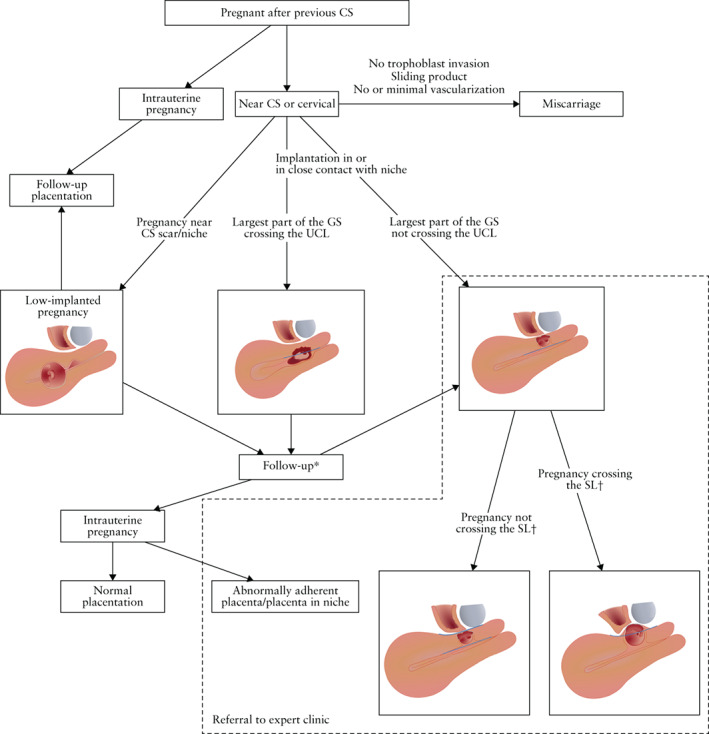Figure 8.

Flowchart showing evaluation of the Cesarean section (CS) scar in first trimester of pregnancy. Step 1: determination of location of the pregnancy: intrauterine pregnancy, low‐implanted pregnancy, Cesarean scar pregnancy (CSP) or miscarriage. Step 2: determination of type of CSP depending on whether the largest part of the gestational sac (GS) is crossing the uterine cavity line (UCL): (a) if the largest part of the GS is crossing the UCL, it should be determined whether the location of the largest part of the GS is in the uterine cavity or in the cervical canal; (b) if the largest part of the GS is not crossing the UCL, the existence of bulging should be determined: (i) if there is no bulging, i.e. the pregnancy is located completely within the level of the serosa/serosal line (SL), it is a CSP with the largest part of the GS in the myometrium and not crossing the SL; (ii) if there is bulging, i.e. the pregnancy is located partly beyond the contour of the outer cervix/SL, it is a CSP crossing the SL. Step 3: determination of location of the placenta: in the niche, near the niche or placenta previa. Step 4: evaluation of presence of signs of abnormally adherent placenta: yes or no? *Management regarding follow‐up or treatment will depend on patient characteristics and wishes. †To be evaluated in future cases and validated by peer‐reviewed articles.
